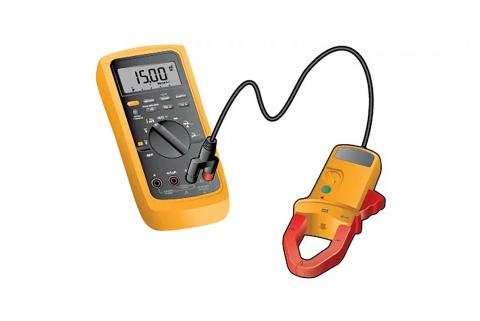Question:
How do I measure AC OR DC current with a clamp accessory
Answer:
Often viewed principally as a voltage-measuring device, a digital multimeter equipped with a clamp accessory can quickly measure current.

Determine if the current to be measured is AC or DC.
Note: Look at the accessory clamp’s specifications and determine whether the clamp outputs a current level or a voltage level.
Below the situation if the clamp outputs mV.
Set up your DMM as follows:
To measure AC/DC current with a voltage output clamp, turn the dial to mV AC for AC current, or to mV DC for DC current.
AC current ;
Plug the black test lead into the COM jack. Plug the red lead into the V jack.
Set the meter to mV AC.
Most of the Fluke clamps are designed to deliver 1 mV, 10 mV or 100 mV to the DMM for every 1 A of measured current, see specification's of the clamp what the output level per A is.
Open the jaws by pressing the tool’s trigger.
Enclose a single conductor inside the jaws. Make certain the jaws are completely closed before taking readings.
View the reading in the display.
DC current ;
Same connection to the meter as for AC current, however turn the meter dial now to mV DC function.
Also here open the jaw and put a single conductor in the jaw and observe the reading in the display.
Tip: Clamps measure current in a circuit by measuring the strength of the magnetic field around a single conductor. Whenever possible, separate the test conductor from surrounding conductors by a few inches. The goal: Prevent the clamp from picking up stray magnetic fields. If separation is not possible, take several readings at different locations along the same conductor. Do not measure shielded conductors, as the magnetic fields are greatly diminished or even eliminated.


